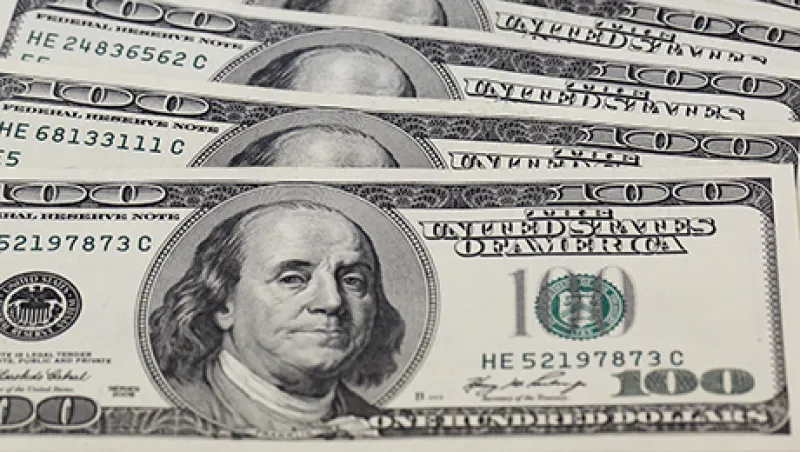On the surface, investor interest in WBI Investments’ ten new actively managed exchange-traded funds ran deep, as the vehicles raked in more than $1 billion in assets on their first day of trading in late August. In actuality, however, the Red Bank, New Jersey–headquartered asset management firm attracted just $200 million in new assets. The vast majority of the inflows came from existing clients converting their separately managed accounts to ETFs in hopes of taking advantage of the tax efficiency of their structure.
“We essentially took the complete portfolio allocation approach that we had available in the marketplace — either in separately managed accounts or in mutual funds — and we dissected or bifurcated it down to these ten ETFs,” says Don Schreiber Jr., co–portfolio manager of the ETFs and CEO of WBI, which had $2.9 billion in assets prior to the new ETFs’ launch. “The benefit of using ETFs is to reengineer the traditional separately managed accounts, on which we have a patent pending.”
The initial attraction of the funds comes out of the tax benefits from the creation and redemption of these shares through in-kind transactions between the market makers, or authorized participants, and ETF sponsors. “Because ETF shares are being swapped for underlying securities — and not cash — the IRS does not consider this a taxable event,” WBI wrote in a client note. “Moreover, not only are these redemptions not taxed, but they give the ETF sponsor an opportunity to dispose of the lowest-cost securities that would otherwise incur the largest capital gains if they ever had to be sold.” Whereas the palette of funds may lead to a lower tax outlay compared with that of mutual funds, however, the new WBI funds come with a higher fee structure than that of other actively managed funds.
WBI charges an annual fee of 1 to 1.08 percent of assets, versus an average of 0.85 percent of assets for actively managed ETFs, according to ETF ratings and rankings web site XTF.com. That’s still a bargain compared with mutual funds, which on average charge 1.4 percent, according to the Investment Company Institute. A recently published poll conducted by ETF.com and New York–headquartered private bank Brown Brothers Harriman showed that 35 percent of the ETF-focused financial advisers surveyed believe the expense ratio is the most important criterion in choosing an ETF, putting the expense ratio as the second-most important factor in picking ETFs, after ETF strategy.
“I have no interest in any ETF that charges 1 percent or more for either active or index tracking,” said Richard Ferri, founder of Portfolio Solutions, an investment management firm in Troy, Michigan, that oversees $1.3 billion in client assets.
WBI’s new ETFs hold stocks, bonds, ETFs, exchange-traded notes and options. According to the prospectus, the firm uses what it calls quantitative computer screening to find investments with positive technical trends and growth prospects. The model sells stocks when they fall below a given threshold, with the aim of raising cash when stock market volatility rises.
“We use options to hedge positions, in addition to the proprietary stop-loss process,” Schreiber says. “Our system is based on math and is quantitative in nature to essentially mimic the outcome of a long-short hedge fund approach, but without the extra risk that we could be wrong on both the long and short bet.”
WBI’s suite of ten ETFs together represent the performance of WBI’s Absolute Return Balanced Plus portfolio. According to Schreiber, $1 million invested in the portfolio from January 1, 2000, through December 31, 2013, grew to $2.4 million, compared with $1.64 million for the S&P 500.
The new ETFs are competing with 108 other actively managed ETFs on the market, according to XTF.com. The WBI funds have a leg up because they started out with tens of millions of dollars in actively managed assets. Most new ETFs roll out with $1 million to $5 million in assets in seed capital, only to die on the vine, too small to attract investors.
Of the fund managers surveyed by Brown Brothers Harriman and ETF.com, 37 percent reported that an ETF would have to have at least $50 million in assets under management in an ETF, and nearly 35 percent would need at least $100 million, before they would consider entering a fund. Only 21 percent said they would consider an ETF with $10 million in assets.
Assets in actively managed ETFs have swelled from $250 million in 2008 to $18 billion as of August 2014, according to Chicago-based research firm Morningstar. Although rapidly growing, they account for a tiny fraction of the $1.7 trillion U.S. ETF industry. Should more investors catch on to the tax benefits, this proportion stands to expand — that is, if investors are willing to pay those pesky fees.
Get more on exchange-traded funds.






